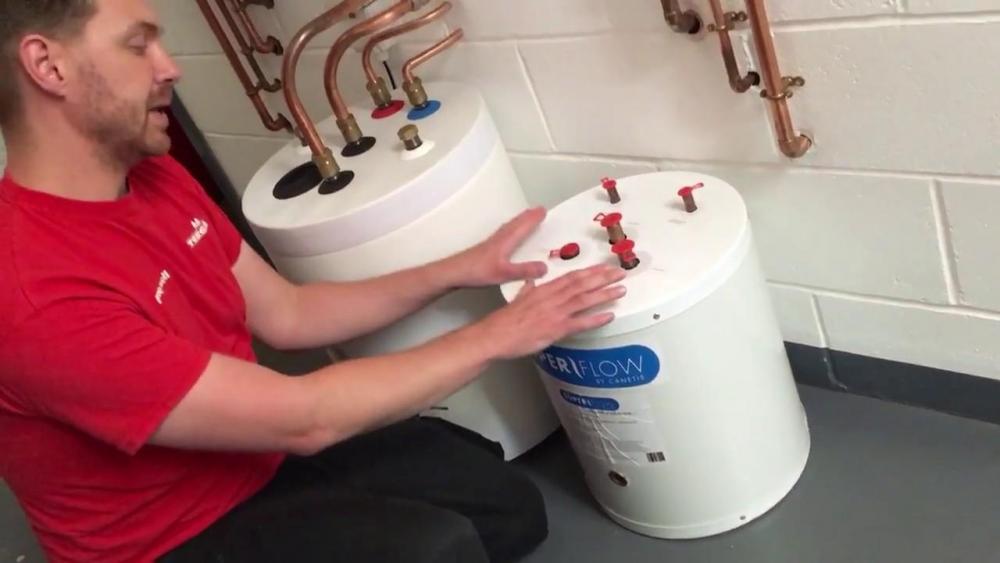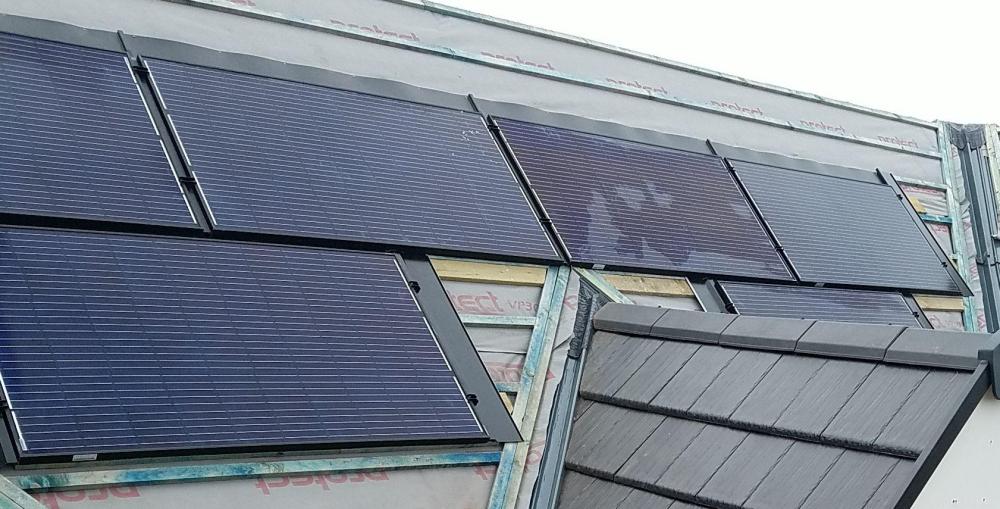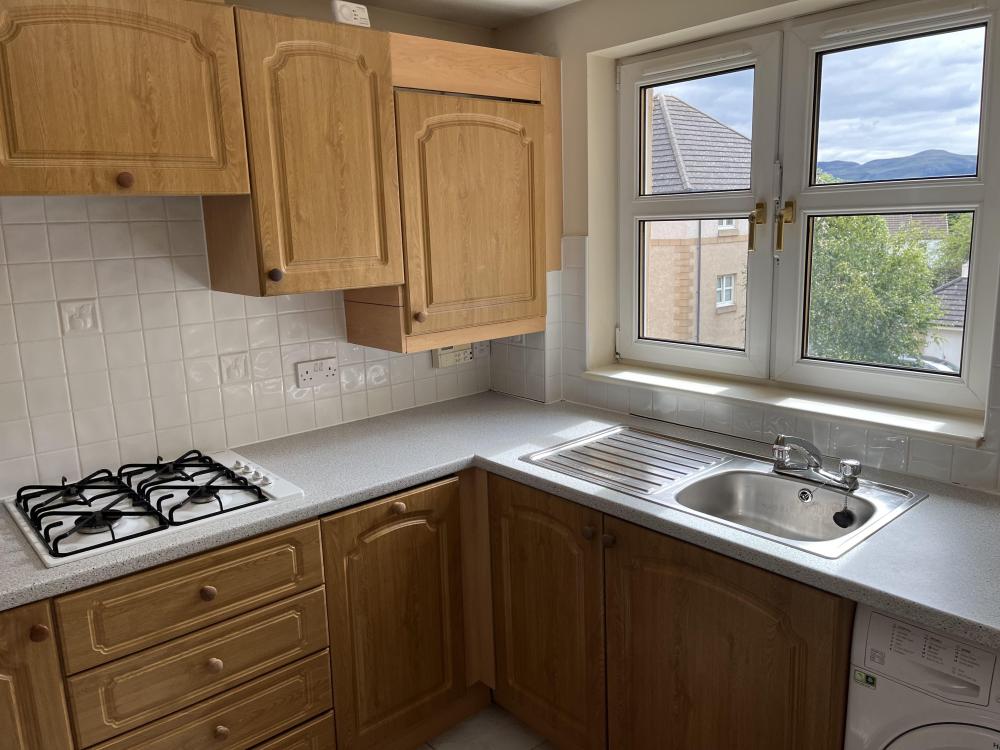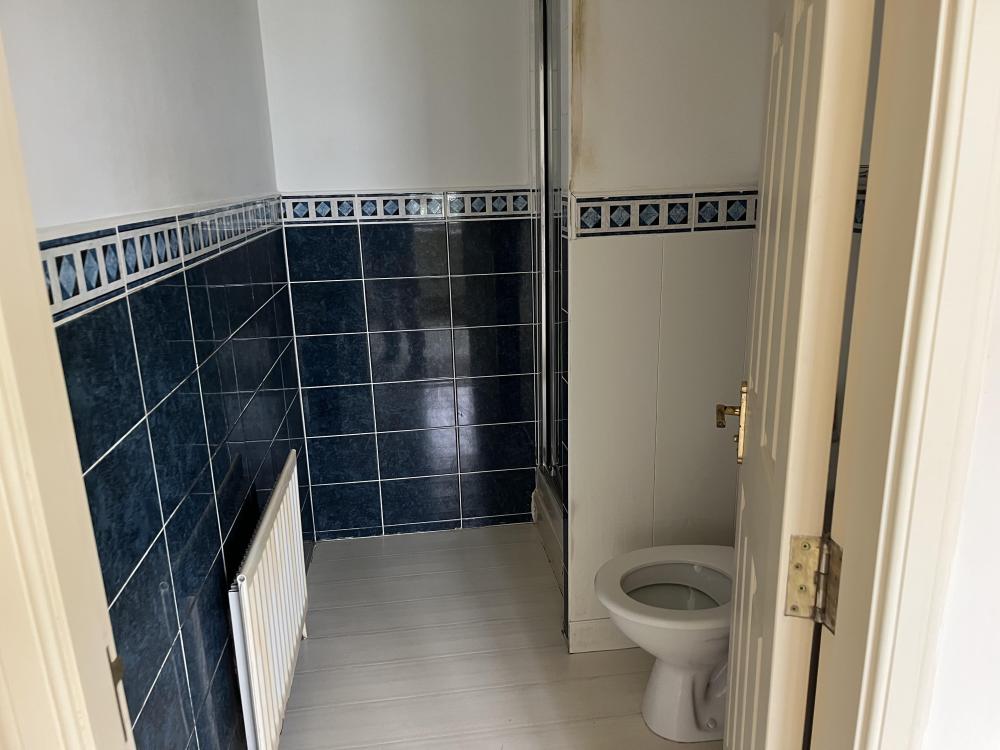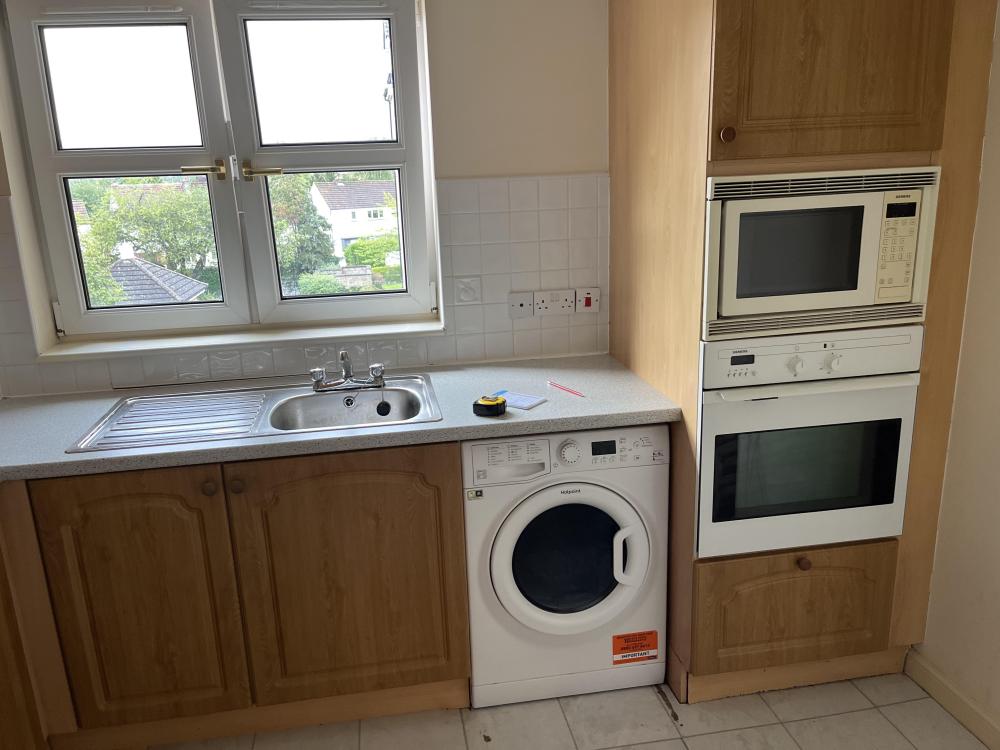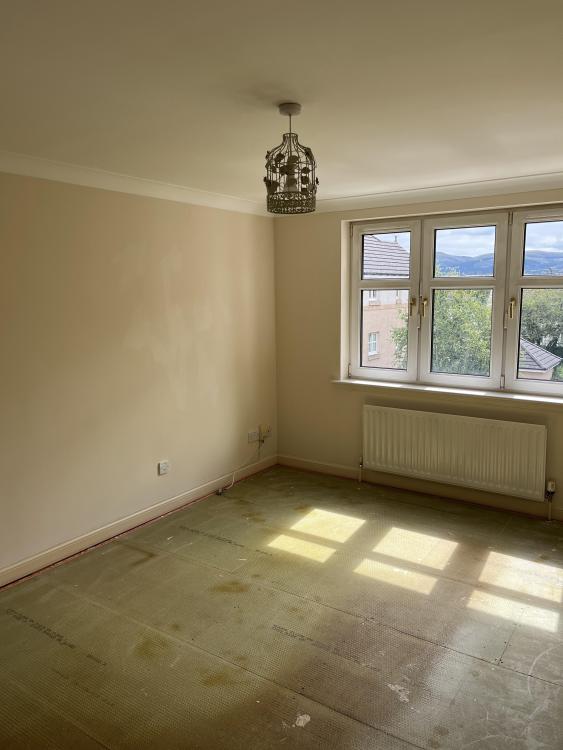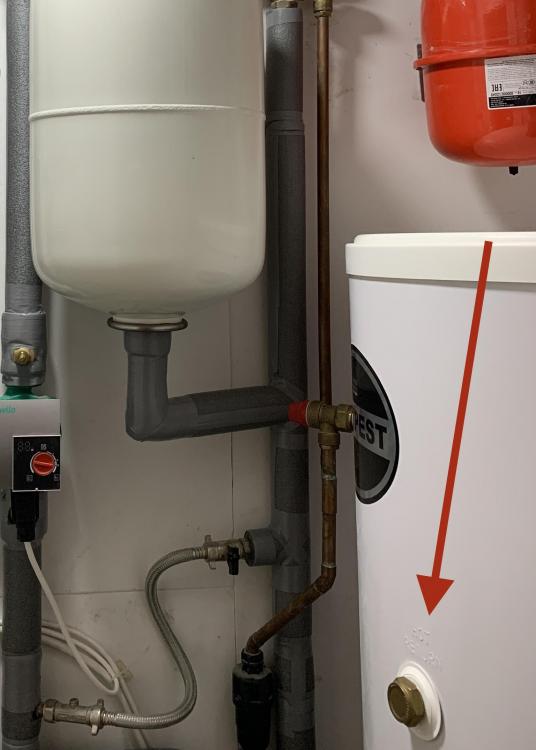Leaderboard
Popular Content
Showing content with the highest reputation on 10/27/23 in all areas
-
Sorry to hear this @Adsibob and the fact it’s causing you sleepless nights, however it’s fixable, keep that in mind. My drawings (I did them) showed no weep vents but both I and my builder new they were required along with trays. See what your builder says and if he gets arsy let him go, if the trays are in (and by scraping mortar from joints you should find them) then putting weeps in Is dead easy, even if there are no trays it can be done, just might cost a bit but what cost peace of mind eh?2 points
-
You could in reality get away with just hammering the rebar in to 16mm holes, I've done this several times and with a 200mm deep hole, those bars aren't going anywhere, esp as they are to stop differential movement, not pulling restraint. Check with your SE.. tho they will almost certainly say hilti resin.2 points
-
2 points
-
CH systems collect sludge in bottom of rads and valves etc. open up all valves fully and flush system till water runs clear .. during this go around knocking bottom of rads with your fist or rubber mallet etc. to dislodge the sludge. You will be amazed how much comes out and the improvement it makes. While system is empty, change any valves that are suspect.2 points
-
Hi and welcome, no such thing as a stupid question. Loads of info available on here searching past threads, failing that, ask away2 points
-
We don’t want oak. We also don’t want to pay £160 per door! doors are easy to change later on and our coffers are dry. So it’s not a case of what we want anymore but a case of what we can afford 😢1 point
-
Sorry, I missed first fix shell.... My bad! I'd estimate the £2500+VAT for finished 'basic' spec Yes, £2000 psqm plus VAT (ish) for 1st fix shell doesn't feel unreasonable. So much can be local market dependant though. Online estimators are worth a punt as a cheap QS alternative.1 point
-
As long as they are made to the British standards buy the cheapest you want if you are replacing them later.1 point
-
2.50 will get some half decent branded faceplates and you'll get price breaks too.1 point
-
This thread is titled “Cheapo double socket faceplates therefore if your planning to replace them and you say you” want to upgrade later” then why not buy the cheapest 🤷♂️.1 point
-
MK is common in government work. I'd tend to agree with @ProDave that they're a bit dear, and not the best ever quality. I went Hager for ours because they look clean and unfussy, and the lightswitches have a handy neutral terminal1 point
-
I have indeed, I have some in my own house. But I did once have trouble with LAP light switches where the screws would not grip multiple cables. Separate to "what make" the ones I hate are screwless flat plate. You really do need a perfect wall and a deep back box to stand a chance of getting them right. Some are better than others, and it's not easy to generalise what is good and not.1 point
-
Schneider lisse are my go to white sockets of a decent quality and price1 point
-
Our spark recommends Schneider, as above suspect the tradies stick to brands that cause them less grief and returns.1 point
-
The excess rain flooding your neighbour's borehole is run-off, not groundwater. Groundwater means water underground, not water on the ground. Boreholes are designed to extract groundwater.1 point
-
I defer to the experts above but add one thing. I used the same electrician for dozens of projects. On one project we had to find savings to get the job. I suggested changing from MK to a cheaper brand. He declined on the basis that they saved him time, and he seldom had to return to deal with issues...in fact he would rather knock the equivalent off his sum. The same may apply to other premium brands.1 point
-
When starting any hole, but especially into something unpredictable like masonry, drill a very small hole with a hand drill first, just to mark the spot securely so the real drill can't skid about.1 point
-
That's the same as the info I provided above but in a wall mounted version, closed coupled to the boiler. Not all combi boilers will take pre heated water, Alpha , Atag, and Intergas do, most other companies are a bit sketchy on details, I suspect most would but tech support in the UK don't come across it much, so outside comfort zone, so they just say no.1 point
-
.A properly sized combi will not provide unwanted bursts of cold water, nor will a properly sized unvented cylinder, but an unvented cylinder will run out of hot water and need re-heating whereas a combi won't. But a combi also has its drawbacks, especially if it has to provide simultaneous hot water to multiple outlets. First you need to sit down and figure out your hot water usage and patterns. For example, do you use lots of short bursts of hot water or do you tend to draw large amounts of hot water at a time, like for baths and showers? Also, what are your usage patterns in terms of timing for the main bathroom and the ensuite. Then you need to check your mains water flow rate and pressure (both static and dynamic). Together, this information will provide you with a more sound basis for your decision making because it will guide you in the direction of the best solution for you and the best solution might be worth the price of storage. But it's difficult to say without more information. Regarding specific products likened to storage combis, Alpha Innovation provide a boiler that has storage and pre-heat for DHW here: https://www.alpha-innovation.co.uk/products/FlowSmart/FlowSmart/1836534677 which is slightly different to a normal storage combi. Storage combis are great if you draw lots of small amounts of hot water as it reduces dhw cycling but some non-storage combis have a pre heat function that can be useful for this, so as i say figure out your usage needs first.1 point
-
IME the quality of the back box makes more of a difference than the actual socket. Deeper boxes do not need longer screws. But... you can pick up longer screws for pennies on eBay. Worth having them to hand sometimes. When I was doing the kitchen, the extra depth of tiles made longer screws vital. Some faceplates are supplied with really tiny screws.1 point
-
Resin anchors, either hilti or rawlplug. The datasheets are on their websites1 point
-
Depends how much your roof void needed the 8. Would be a shame to use 2 and then find that you have a condensation problem in the roof void.1 point
-
I like the MK 'logic plus' (they are just standard sockets). I've found over the years that MK has better quality products than some others. https://www.screwfix.com/p/mk-logic-plus-13a-2-gang-dp-switched-plug-socket-white-5-pack/8458r1 point
-
I've used all sorts of different ones, including the 99p Toolstation ones. Can't really tell any difference tbh. There are sometimes differences in the angle of the cable entry but if you have a decent service void and a bit of slack to work with you'll be fine.1 point
-
I only pressure tested it because I could... a vacuum down should be quite OK if you're not messing about and modifying the linesets.1 point
-
Gas is really the past. But if you insist on gas you have the two options you mentioned plus combi with pre heat cylinder. The issue with all combi boilers in the UK is they are fitted with a flow restrictor to help with the production of hot water in winter and the required extra heating needed as the cold water coming into the house get colder. So even the best performance on paper can be an issue in reality. Combi-SuperFlow-White-Paper-v1-2-4.pdfCanetis-SuperFlow-Product-Sheet-WE-050318.pdf A combi storage gets around this by having a volume of water heated by the CH circuit. A pre heat cylinder does the same thing. And is more flexible space wise.1 point
-
There's eight around the roof already, so there is some choice, it would also save putting anymore holes in.1 point
-
There are ready-made translucent, dimpled panels that simply slot into the space. If you want to form a white or shiny box up to coincide with a skylight then it is doable. A surprising amount of light tends to find its way even if you don't. But it will be more about day and night recognition than illumination. It gets hot in the void you have created,1 point
-
Probably not a solution out there as corporates don't care about serfs seeing the sky, they would just go straight across the skylight and if they're feeling generous might stick in some frosted perspex tiles that go a nice yellow after a few years, matching Maureen's eyes. Seen these office tiles used in US houses, always taken aback to see them in a domestic situation, not sure why.1 point
-
1 point
-
Unless you can inspect the finish in person, I don't think you can really tell and it's possible they all get made in the same 3 factories. Maybe quality of installation instructions and whether the wall supports are steel or plastic can give you a clue.1 point
-
The Schneider si types are not time delayed but protect against transient inrush current on startup. They've solved a lot of headaches for me where the client/spec called for a 30mA RCD.1 point
-
£2000/sqm is the ballpark figure, but you will want a contingency on top of that. Talking to a QS (quantity surveyor) is the only other way to get a better estimate, but to be useful they'd really need a set of formal construction plans from the architect and structural engineer, in which case you may as well well just create a tender pack and get quotes from contractors.1 point
-
Go back to your supplier and buy some self-balancing trvs packs with lockshield valves. You then use an app to set the valve to the correct flow and off you go. Balancing using just the lockshields can be a painful endeavour, depending on the brand of lockshield. Lots of videos on YouTube as always which will help you. Oh, and for fitting both your trvs and lockshields I'd recommend you buy to Loctite 55 thread sealing cord - easier and quicker to get a good seal compared to using ptfe tape.1 point
-
If you do replace all your trvs I'd recommend seriously considering self balancing replacements. They're a dream to get the system balanced and working properly.1 point
-
and don't forget to thank the valves for their 28 years of service. Do they have a name on them?1 point
-
It's the DC component that's the issue, not the actual currrent and that could well be RCD brand specific. The original incoming 100mA type-S I installed in our meter box was sensitive to our CE-iVT9, as soon as the inverter was energised (but before actually driving the compressor to any degree) it would trip out.1 point
-
1 point
-
That sounds like a good idea, draining down will also give you a chance to flush the system, new inhibitor and peace of mind with new TRV,s. Re balance the system, consider it like getting your car serviced.1 point
-
And if the home built untested/certified mish mash doesnt shutdown when the grid is down,what happens to the linesman trying to fix the fault down the road?1 point
-
Well BS 5628 Code of Practice for the Use of Masonry says: 5.5.7.4 Weepholes Weepholes should be formed through the outer leaf immediately above the cavity tray. These may be formed in the vertical cross joints at intervals not greater than 1 m. There should be not less than two weepholes over each opening. Proprietary devices may be installed to form weepholes. They may be designed to drain the cavity but prevent the ingress of wind-driven rain. Weepholes need not be provided if walls have a rendered external surface finish. I think this situation is frustrating for any customer of the construction industry. You have the designer, the constructor and the certifier and it still goes wrong. Part of the problem is every project is a "prototype". Another is the separation of the functions; in contrast for instance, a car company designs, sources and manufactures within it's own direct control. It then gets lots of goes at fine tuning the product to get it right. Construction tends to have different people who often don't talk to each other but nevertheless assume the "other" is looking after the detail. Once the one off build is done it's the customer who is left to find out what mistakes have been made. How you prevent this kind of thing happening? Well the new Building Safety Act is a nod in that direction but I can't see this sort of simple error will ever be eradicated. It's gone on forever - they never did get that roof on Stonehenge despite getting the money up front!1 point
-
Also a lot of weight at mid span where the beam will deflect. You seem to have a grasp of the loadings issue so, yes, do this. It is all too easy to draw a plan and add notes that the SE has to make it work. Efficiency, and value, require realistic geometry that the structure can work within. Some architects have been taught , or absorb, am understanding of structure. Some have not. So get it looked at in principle now, and then the detail can follow. Make it clear if projecting beams and columns are not acceptable, and that you don't mind paying a lot more for this.1 point
-
1 point
-
I’ve bought two Brookvent, the items seem ok, but they are very very expensive, replacement fans are knocking on for 300 each, sensor failed on mine and that was 50 beans, when it turned up it’s a circuit board and a 5 inch cable , looks about 99p worth, the filters are crap quality, they are stringy foam around a metal square and they start breaking as you remove them, all the green coloured 1.2 air cycles you can’t open them or service them, the aircycle 1.3 you can they are helpful on the phone but won’t help with other stuff , I bought a cheap eBay 1.3 but I rang up and asked to buy the pcb to make it a digital version and they tell you it can’t be done and you have to pay best part of 2 grand for a new unit but you don’t1 point
-
Sadly in the summer, my brother's wife died very suddenly and unexpectedly. She had been something of a hoarder and none of the family had been to visit them for some years. They would only come to us. When we went to his flat we found it was a mess. We had professional cleaners in and then I arranged to have it totally refurbished, so that it would be easier for him to look after once he moved back in. He has been staying with my parents for the last few months. We were very worried about his health, but he is doing much better now. The flat actually smelled like someone smoked even though they don't and I think the air quality affected their health. They purchased the flat when they got married 22 years ago and it had not been touched since then. Further they refused to open any vents and properly use extractor fans so they had a big mould problem. We replaced the kitchen and an en suite, replaced all the flooring with hardwood and have had the whole place redecorated. Hardwood was expensive, but will be a lot easier to look after. The previous carpets were stuck to the floor beneath them. When the flat was built the woodwork was painted cream eggshell, it looks awful as it is so similar to the magnolia walls, that you would think someone had emulsion the woodwork. Took three coats to get it white. As well as organising everything, I did the new kitchen design and put up the light fittings. I reckon spending just a few pounds on lights massively elevates a place. The kitchen and en suite floors had to be replaced as they had started to rot due to water leaks. I also luckily discovered a leaking soil pipe just before the new kitchen went in. Just need to order some new furniture now and put up some curtains. Found a small building company to work with who were very good. Very impressed with DIY Kitchens. The original kitchen had bizarrely been installed around 50mm into the room to avoid cutting the pipes into the back of the units with the oven jutting out a further 150mm due to the soil stack. I fixed this in the new design. It was quite a bit of space to lose in a room basically only 3m square. I think the before and after pictures are pretty obvious. The before pictures are after the professional cleaning.1 point
-
Given how hard it is to find Type F RCDs or RCBOs from sensible places I'm doubtful the majority of people are using them. CEF list a 40A type F RCD for £160+. That's about all I've found1 point
-
I want to build in ICF, it's something I'd be confident attempting myself, after I've been on the manufacturer's training course. The ground floor has been spec'd in brick, first floor in render. TF would be an obvious option, but it's expensive (as I won't need to pay labour with ICF) and first floor noise is a concern, we live near a busy-ish road, and we like our bedroom very quiet (150mm concrete + 250mm EPS should hopefully help with that!)1 point
-
Things like this usually get added to the growing stack of "good ideas", and fall to the wayside when you realise that life is too short to worry about things as minor ( even more so when there is an ever-growing list of things far more major to tend to )..... A good idea to put the offcut UFH pipes in as conduits, and simply run them to a single back box with a blank plate on, and a Cat 5/6 back to a plant / data location for 'Justin'.1 point
-
Hi and welcome. My only suggestion is why do you want to join it to the other houses? Given the plot you have I would now be re submitting planning to make the new house detached from the rest of the row. Even if that makes your new build slightly smaller.1 point
-
Ok... so ... Hot comes off the top of the tank down an insulated 22mm pipe, and then is tee’d off to each tap as close as you can get. After the last tap spur, it drops to 15mm or even 10mm and then returns to the tank via either a bronze or polypropylene bodied pump (due to it being potable water). Hot return port is here on a Telford Heat Pump cylinder. This pump runs intermittently to draw a slug of hot water from the tank, and then return the cooler water to the tank. Essentially this whole circuit is just a pressurised extension of the tank. When a tap is opened then the water pressure takes over and taps operate as normal but the only “cold” water is the last leg from the circulating loop to the tap.1 point







